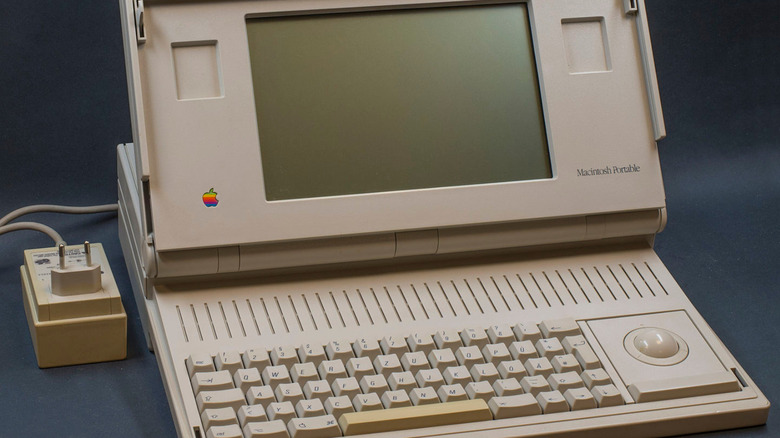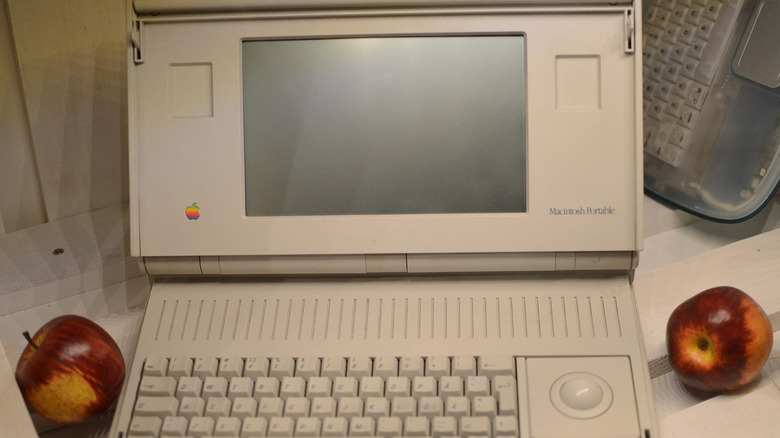Why Apple's First Laptop Was A Terrible Failure
The MacBook is arguably one of the most successful laptop brands ever, and it's not hard to understand why. We here at SlashGear have reviewed various MacBooks as they hit the market — our most recent review on the MacBook Pro M2 Max scored a 9 out of 10 on our rating scale! Many people can comfortably say that Apple has solidified the MacBook formula and will continue to further hone its craft for years to come.
However, it took a while for the company to get to this point. In order to get the MacBooks we have today, Apple had to learn from the mistakes of the Macintosh Portable. Released in 1989, it was touted as a major innovation for several reasons. Although it wasn't the first portable computer (according to Computer Hope, the Osborne I beat it by eight years), it was the follow-up computer to the wildly-successful Macintosh II. People presumed that the Macintosh II's advancements in graphical fidelity would carry over into the Macintosh Portable. Furthermore, Fast Company wrote that the Portable was the first of Apple's computers to be powered by a battery.
With the need for portable computers growing rapidly, it was expected that the Macintosh Portable would be a smash hit for the company. However, the device was riddled with production mistakes that made it a pain to carry, both figuratively and literally.
Hannes Grobe via Wikimedia Commons | Cropped and scaled | CC BY 3.0
How architecture made the Portable a failure
As expected, the actual software of the Portable wasn't unlike the Macintosh II. In fact, Cult of Mac reports that it had a 16 MHz 68000 CPU, which was actually faster than the previous Macintoshes beforehand. The Portable received favorable reviews upon release, although sales of the computer were low, and it isn't hard to understand why that is.
For starters, the Portable is just as heavy as it appears to be. It weighed around 16 pounds at the time of release – for comparison's sake, Time Magazine wrote that this was the equivalent of "more than five MacBook Airs." This means that, although the device was technically portable, it would be a huge pain to actually carry around. Not only that, but the innovative battery ended up draining rapidly due to the introduction of models with backlit displays towards the end of its life cycle. The final nail in the Portable coffin was its price range between $6,500 and $7,000, depending on if you wanted the portable with an attached hard drive. Adjusted for inflation, these two versions of the Portable would cost between $16,042 and $17,256.
It's no wonder why the Macintosh Portable failed to sell as successfully as Apple's desktop computers at the time. Thankfully, they would begin to progress towards their current brand of MacBooks with the introduction of the PowerBook in 1991.
Wojciech Pędzich via Wikimedia Commons | Cropped and scaled | CC BY 4.0

